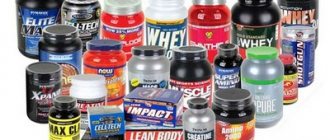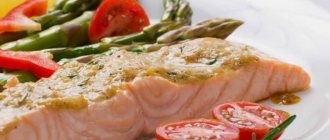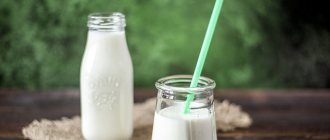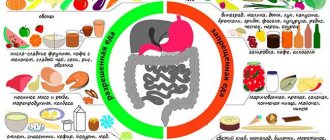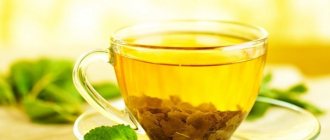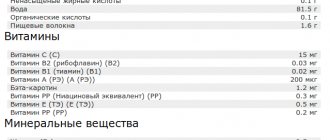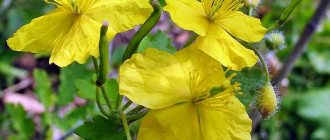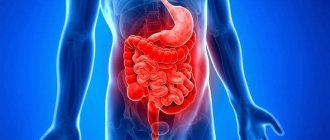The digestive system is part of the human body. All useful substances and elements entering it are digested and absorbed naturally. The appearance of pancreatitis and gastritis at the same time is a common phenomenon, since these two diseases have the same causes of occurrence, common symptoms and treatment.
pancreatitis gastritis treatment
Inflammation of the pancreas along with inflammation of the stomach poses a serious threat, so you should not hesitate to visit a doctor. The doctor will conduct all the necessary diagnostic tests and give the right recommendations.
General recommendations for catering
An inflamed pancreas, like a problematic stomach, needs a gentle diet. Therefore, the general principles of organizing the diet are the same for both pancreatitis and gastritis:
- Food portions should be small (up to 150 grams).
- It is better to eat often, but little, without burdening the digestive organs with prolonged work. The most rational solution is to switch to 5 meals a day (breakfast - 2nd breakfast - lunch - afternoon snack - dinner).
- All products are crushed during the cooking process and chewed thoroughly during eating.
- Food should not be cold. All dishes and drinks are better absorbed when warm.
- Products should not be dry, hard or have sharp edges. Rusks or drying should be soaked in broth or tea.
- The diet is strictly on an hourly basis. The stomach, getting used to a certain regime, begins to secrete juice in advance for better absorption of foods.
2 hours before bedtime, food is completely excluded. You need to give the gastrointestinal tract time to stop working and have a good rest overnight. It is not recommended to overload the body immediately upon waking up or to snack on the go. You need to eat calmly and slowly.
Eating quail eggs
If you have pancreatitis, you can actively eat quail eggs. This dietary product also contains natural protein, which is necessary to restore stable functioning of the pancreas. With their regular consumption in food, not only the condition of this organ is normalized, but also the patient’s immunity increases, the general well-being and state of the endocrine system improves, which again has a positive effect on the healing process of the pancreas.
Unlike chicken eggs, quail eggs are recommended, firstly, to be taken more often, and, secondly, in the form of an eggnog drink. It's very easy to prepare. You need to break two or three pieces into a glass and mix them with one teaspoon of sugar. It should be taken before every meal. The course of administration is one month, then a break of two to three months is required and you can resume consuming quail egg whites.
Thus, taking into account the method of preparation and the frequency of their intake, quail egg white is more beneficial for patients with pancreatitis than chicken egg white. This is due to its chemical composition. However, in both cases, eating egg whites is beneficial; it provides the body and pancreas with the necessary amount of easily digestible microelements.
General tips for organizing meals
The main thing in diet therapy is a clear distinction between foods that are beneficial and those that are harmful. There are a number of products that can be found on the approved lists. But even they become dangerous if used incorrectly.
For example, if you have pancreatitis or gastritis, it is acceptable to eat steamed egg omelet. But hard-boiled eggs are strictly prohibited by gastroenterologists. Baked chicken meat is a provocateur of exacerbation of pancreatitis or gastritis. While chicken broth has a healing effect on the inflamed organs of the gastrointestinal tract.
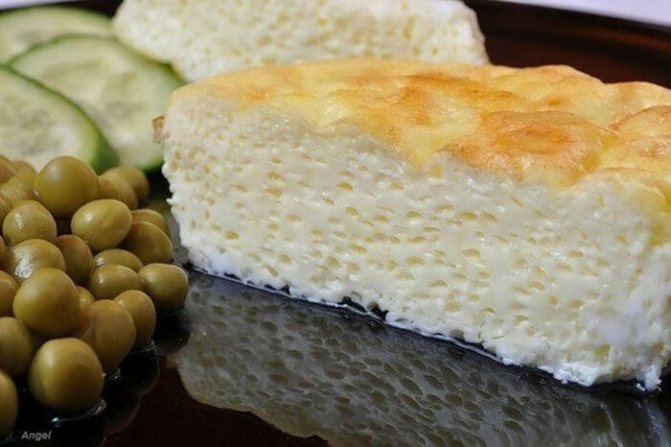
If we talk about cooking methods, we definitely exclude frying, smoking and drying. Products for the diet menu are boiled or cooked until ready by steaming, in a slow cooker, or in the oven.
Authorized Products
During periods when pancreatitis and gastritis are exacerbated, ingredients that do not increase the acidity of the stomach and do not irritate the mucous membrane are considered the least dangerous.
Table of allowed food groups:
| Flour products | Yesterday's bread (preference – whole grain, rye, wheat), homemade crackers, dryers, biscuits, crispbread. During periods of remission - noodles and spaghetti (up to 170 grams per serving). |
| Cereals | Rice, buckwheat, oatmeal, semolina. |
| Types of vegetables and herbs | Vegetables include potatoes, pumpkin, beets, carrots, eggplants, and zucchini. You can add 1 tbsp daily. l. chopped celery, parsley and dill. |
| Fish dishes | You can eat the pulp of varieties with the lowest fat content (hake, cod, pike perch), boiled or cooked in a slow cooker. Fish meatballs and broths. |
| Seafood | Sea kale. |
| Meat menu | For preparing broths, steamed cutlets and meatballs, preference is given to chicken, rabbit, turkey, and lean veal. |
| Fermented milk | Kefir, low-fat cottage cheese, cheese are not prohibited with normal or low stomach acidity. |
| Eggs | Steamed omelette made from chicken and quail eggs. |
| Oil | Refined sunflower, olive, flaxseed, pumpkin. In stable remission - creamy (no more than 30 grams per day). |
| Fruits | Bananas, baked apples. |
| Bee products | Honey, propolis, royal jelly. |
| Spices | Sesame, fennel, cumin, turmeric, cloves. |
Decoctions of herbs or rose hips, Borjomi, weak black tea, and homemade jelly are recommended for drinking.
Note: the described ingredients constitute a special menu number 5 in its expanded form, intended for people with pancreatitis, gastritis, cholecystitis and hepatitis.
Prohibited Products
In fact, all components that are not included in the table approved by gastroenterologists are considered harmful to people suffering from pancreatitis and gastritis. This means that “taboo” is declared:
- any smoked meats;
- preserves and marinades;
- spicy and sour dishes;
- fatty varieties of fish, meat, cheeses;
- mushrooms;
- sweet and rich baked goods;
- nuts and seeds;
- coffee, alcohol, carbonated drinks.
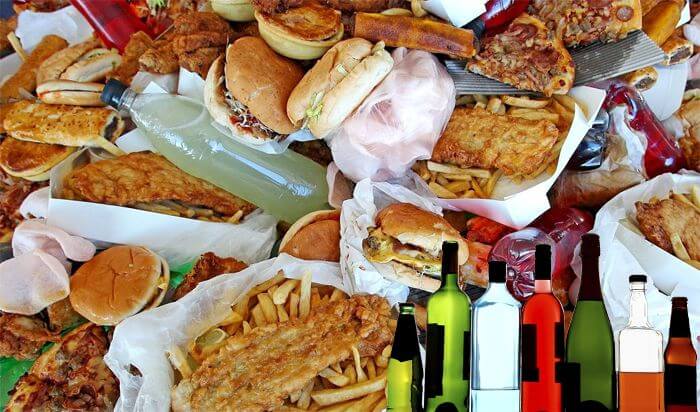
Legumes (peas, beans, corn) are prohibited - they cause bloating and belching. Regular cabbage is dangerous - its acid provokes heartburn. The same applies to sorrel, spinach, radish, and lettuce. A categorical “no” will have to be said to horseradish, garlic and onions, including green ones.
During the remission stage, a small amount of salt is allowed. Iodized is best. It is recommended to add salt to dishes at the end of cooking.
Diet menu for gastritis and pancreatitis
Diseases such as pancreatitis and gastritis have a number of similar symptoms - nausea, vomiting, heaviness in the stomach, indigestion, lack of appetite. After examination, establishment of an accurate diagnosis, choice of therapy, the patient is prescribed diet No. 5. It is quite strict, but satisfies the needs of inflamed organs - the pancreas and stomach.
Nutrition during exacerbation of gastritis and pancreatitis should be thoughtful. The acute phase of the disease is accompanied by severe pain in the back and epigastric region. The patient has a fear of eating food, and often experiences nausea and vomiting. In the treatment of any gastrointestinal pathology, diet is the main therapeutic measure. That is why diet No. 5 implies not only a list of permitted and prohibited foods, but also methods of preparing food, the number of meals, and the daily intake rate.
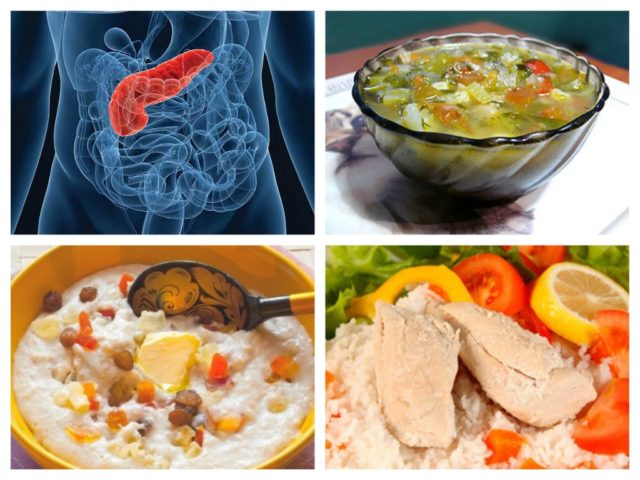
Therapeutic nutrition for pancreatitis and gastritis
Basic recommendations of diet No. 5:
- Baked, stewed, boiled and steamed dishes are allowed;
- at one time you need to eat no more than 200-250 g of food;
- It is forbidden to eat too cold and hot food;
- the interval between meals should be several hours;
- pasta should be cooked only in water;
- It is unacceptable to use dressings and seasonings in dishes;
- soups should be prepared exclusively with water;
- first courses should be pureed or in the form of puree soup;
- cook porridge semi-liquid;
- You can make steam cutlets from fish or cook it only by steaming;
- from poultry meat you need to prepare steamed cutlets, soufflés, casseroles;
- dairy products must be low-fat;
- vegetables should also be steamed and eaten in small portions;
- Raw fruits are prohibited; it is better to make jellies, mousses, and jelly from them;
- It is allowed to prepare decoctions, compotes, and jelly from drinks;
- For sweets, you can eat jam, marshmallows, and marshmallows in small quantities.
Attention! Patients with chronic pancreatitis and gastritis in remission are prescribed diet No. 5B. It is characterized by a reduced fat content - up to 70-80 g per day.
Thus, therapy for pancreatitis and gastritis with diet involves certain foods. Limiting the consumption of prohibited foods will benefit many other diseases of the digestive tract. A steamer and blender can help in organizing proper nutrition. With this diet, you don’t have to worry about exacerbation of gastritis and pancreatitis.
What you can do on a diet for gastritis and pancreatitis
Patients with exacerbation of gastritis and pancreatitis must constantly adhere to a diet, monitor nutrition, the composition of dishes, and the frequency of meals. At the same time, it is important to consume permitted food products only when properly processed. Absolutely healthy people should adhere to the same recommendations.

Foods for gastrointestinal diseases
Gastroenterologists recommend using the following foods for diet during exacerbation of diseases:
- lean meat and fish, chicken, rabbit, turkey, boiled or steamed;
- first courses without rich broth, you can add cereals and vermicelli;
- whole grain yesterday's bread, biscuits;
- sunflower and butter in small volumes;
- cereals include buckwheat, oatmeal, crushed egg, semolina, rice;
- baked vegetables - tomatoes, potatoes, pumpkin, cauliflower, zucchini, carrots;
- eggs boiled or in the form of an omelet;
- dairy products with a small percentage of fat content;
- sweet ripe fruits are allowed;
- honey, jam, marshmallows in small quantities.
Recommended reading: Benefits of tomatoes for the body
Important! During diagnostic studies, acidity should be clarified. Based on this, some nuances of the diet may change.
What not to do on a diet for gastritis and pancreatitis
It is worth mentioning foods prohibited for consumption during exacerbation of gastritis and pancreatitis. These include all fatty, salty, fried foods, all types of mushrooms, seeds and nuts. You should refrain from eating cabbage, sorrel, spinach, radish, radishes, and legumes. Coffee, tea, alcohol, spices and seasonings, as well as smoked products, marinades and preserves are prohibited.
Nutrition during exacerbation of pathologies
The diet is especially strictly controlled during exacerbation of gastritis and pancreatitis. After an attack, the patient is advised to fast for at least 1 day until the pain and nausea subside. Refusal to eat is necessary in order not to develop swelling and necrosis.
When the signs of acute inflammation are behind, healing decoctions, light broths and black crackers are introduced into the menu. On days 3–5, the patient is transferred to diet number 5, which includes products from the permitted list in the table above.
Important! Dishes are added to the diet gradually, one new ingredient per day, with close monitoring of any changes in symptoms.
Following broths and decoctions, vegetable puree soups and porridges (at first without oil) are returned to the diet. Only then – boiled white meat and fermented milk products. And if there are no new signs of inflammation of the pancreas, the menu is varied with fruits, herbs and permitted spices.
Preparing an omelet for diet food
With this disease, omelet is the most common dish; it can be prepared for any type of pancreatitis. It is included in the diet both during remission and during exacerbation of the disease. The preparation is very simple - you just need eggs, milk and a little salt.
Chief gastroenterologist of the Russian Federation: “PANCREATITIS does not go away?! A simple treatment method has already healed hundreds of patients at home! To cure the pancreas forever you need...” Read more »
All ingredients used must be mixed and whisked, then poured into the container in which you will cook. Cooking is carried out over low heat, and the lid is placed on top.
Depending on where you cook - in a slow cooker, on the stove or in the oven, the cooking time may vary. For pancreatitis, it is useful to make a protein omelet; it will be airy, tasty and tender.
Also read: Nutrition for pancreatitis - recipes
Dietary recommendations for illnesses
A balanced diet organized for pancreatitis and gastritis takes into account the daily norms of valuable components:
- total calories – up to 2.5 thousand kcal;
- carbohydrates – up to 300 grams;
- proteins – 120 g;
- fat – 80 g.
The total number of elements is approximate. Individual standards are calculated by a nutritionist.
The treating gastroenterologist can adjust the list of permitted products. This is especially true for people with gastritis and duodenitis (inflammation of the mucous membrane). If the acidity is high, it is forbidden to consume fermented milk products. During the remission stage, a little boiled milk is sometimes allowed.
To minimize stress and pressure in the digestive organs, follow the cooking instructions:
- products are consumed crushed or pureed;
- meat and fish broths - second cooking;
- exclude frying and smoking; food must be boiled, stewed, steamed or in a slow cooker.
We must not forget about a constant meal schedule. It is better not to miss scheduled meals. There is no need to arrange additional snacks.
Rules of therapeutic fasting
Fasting is an effective method for treating diseases of the digestive system, including the stomach and pancreas. A short but complete refusal of food will allow you to provide rest to the inflamed organ and quickly restore its functional activity.
In order to understand the mechanism of action of hunger on a diseased organ, it is important to understand the pathogenesis of the disease, that is, the stages of its development. Normally, when eating food, the pancreas produces digestive enzymes that break down the food eaten.
During an inflammatory reaction, the pancreatic ducts become blocked and, in fact, the organ begins to digest its own tissues. Abstaining from food eliminates the need for the synthesis of digestive enzymes. The pancreas is in rest mode and therefore regenerative processes begin to activate in it. In the acute period of pancreatitis and gastritis, therapeutic hunger is indicated.
Important! Therapeutic hunger eliminates pain in a short period of time.
After refusing food, a strict diet is prescribed. It is important to end the hunger strike gradually, otherwise you can seriously harm yourself. In some cases, abstaining from food altogether eliminated the need for drug therapy. First of all, you should make sure that there are no contraindications to the procedure.
Sample menu for the week (for every day), what can you eat and what should the food be?
Nutritionists have developed ready-made approximate meal plans for patients with gastritis and pancreatitis. This greatly simplifies the task of organizing proper nutrition at home.
The table shows one of the most common weekly menu options:
| Day of the week | Name of meal | Dishes and products |
| Monday | Breakfast | Semolina porridge cooked in water. |
| A piece of yesterday's bread with honey. | ||
| Tea. | ||
| Light snack | Vegetable salad. | |
| Still water. | ||
| Dinner | Chicken broth with rice noodles. | |
| Meatballs made from rabbit or turkey meat with vegetables. | ||
| Berry juice or jelly. | ||
| Afternoon snack | A glass of kefir. | |
| Dinner | Cottage cheese casserole cooked in a slow cooker. | |
| Plantain decoction. | ||
| Tuesday | Breakfast | Steamed egg omelette. |
| Light snack | Baked apple with honey. | |
| Dinner | Zucchini puree soup. | |
| Afternoon snack | A glass of jelly. | |
| Dinner | Fish and potato casserole. | |
| Wednesday | Breakfast | Cheese pancakes from a multicooker. |
| Light snack | Kefir with biscuits. | |
| Dinner | Carrot puree soup with black breadcrumbs. | |
| Afternoon snack | Berry jelly. | |
| Dinner | Pumpkin puree. | |
| Thursday | Breakfast | 1 soft-boiled egg. |
| Light snack | Rosehip decoction with honey. | |
| Dinner | Potato and carrot soup with low fat cheese. | |
| Afternoon snack | Baked apple. | |
| Dinner | Steamed fish cutlets. | |
| Friday | Breakfast | Rice cooked in water. |
| Light snack | Baked apple with honey. | |
| Dinner | Chicken soup with breadcrumbs. | |
| Afternoon snack | Oatmeal jelly. | |
| Dinner | Buckwheat porridge with flaxseed oil. | |
| Saturday | Breakfast | Oatmeal with water. |
| Light snack | Banana with honey. | |
| Dinner | Turkey meatball soup. | |
| Afternoon snack | Plantain decoction with dried fruits. | |
| Dinner | Boiled fish. | |
| Sunday | Breakfast | Semolina. |
| Light snack | Kefir with biscuits. | |
| Dinner | Rice soup with pieces of white meat chicken. | |
| Afternoon snack | 2 baked apples. | |
| Dinner | Stewed zucchini. |
Dishes can be alternated in a circle. Or rearrange for next week. It is advisable to ensure that variety is maintained: if you already had oatmeal for breakfast, then it is better to postpone the oat jelly to the next day.
Herbal infusions
The menu for treating gastrointestinal problems should include a lot of warm drinks. Regular black tea (not strong and slightly sweetened with honey) is a very good component in a set lunch, breakfast or dinner. But you shouldn’t drink it often.

Herbal infusions bring variety and great benefits to the diet:
- from plantain;
- St. John's wort;
- yarrow;
- rosehip.
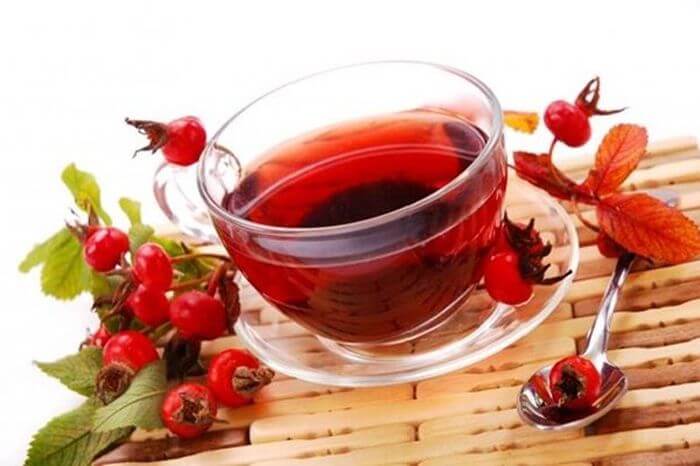
Natural medicines soothe inflamed tissues, promote their regeneration, stimulate normal gastric motility and equalize the acid-base balance.
The best way to brew herbs and rose hips is in a thermos. But you can boil the components in a steam bath. Approximate combination of ingredients – 1 tsp. per glass of water.
Why does the doctor prescribe a diet?
With pancreatitis, an inflammatory process develops in the pancreas, caused by excessive consumption of fatty and fried foods, alcoholic and carbonated drinks. To reduce the load on the gland, the doctor prescribes a diet for the patient.
Along with pancreatitis, gastritis often develops, in which the gastric mucosa becomes inflamed.
As a result, the production of hydrochloric acid is disrupted, which affects digestive processes. To reduce inflammation, it is necessary to follow a diet that the doctor necessarily prescribes to the patient.
Diet plays a big role in the treatment of pancreatitis and gastritis. Doctors recommend removing some foods from the daily menu to reduce the load on inflamed organs.
Dish recipes
Food can be not only useful in the treatment of gastritis and pancreatitis, but also tasty if you know how to prepare it correctly. Below are the most popular recipes that will help diversify your diet menu and enjoy the taste of the products.
Meatballs with carrots
Small carrots are peeled, grated on a fine grater and placed on the bottom of an enamel bowl. Fill with water and put on fire.
For minced meat, you can use boneless chicken or turkey fillet (sometimes lean veal is allowed). Grind twice in a meat grinder, achieving maximum grinding. Finely chopped herbs (green parsley is best) and a small pinch of salt are added to the minced meat. Roll the mixture into small balls with a tablespoon and lower them one by one into boiling water (this will prevent them from falling apart).
The meatballs are cooked for 20–25 minutes and then removed from the water. The water is drained through a colander, and the boiled carrots are used as a side dish.
Thanks to thorough mashing, the meat will be easily digestible, and because of the carrots, it will seem juicy and very tasty. Vegetable puree soup
Usually such a soup is prepared with a second chicken broth, but it will be delicious without it.
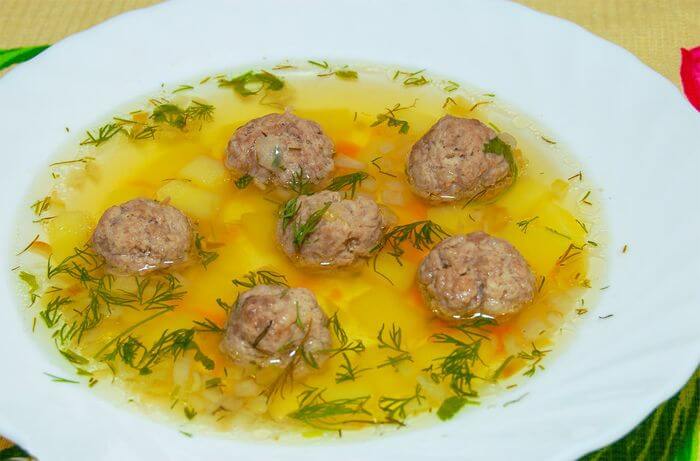
Pour peeled and diced vegetables into boiling broth or just water (the liquid should barely cover the vegetables).
Combinations of:
- carrots and zucchini;
- potatoes with eggplants;
- pumpkins with carrots;
- potatoes with beets and celery.
Vegetables are cooked until fully cooked (when checking, the cube can be easily cut in water with a knife). Part of the water is poured into a mug to make it easier to crush the vegetables to a homogeneous consistency.
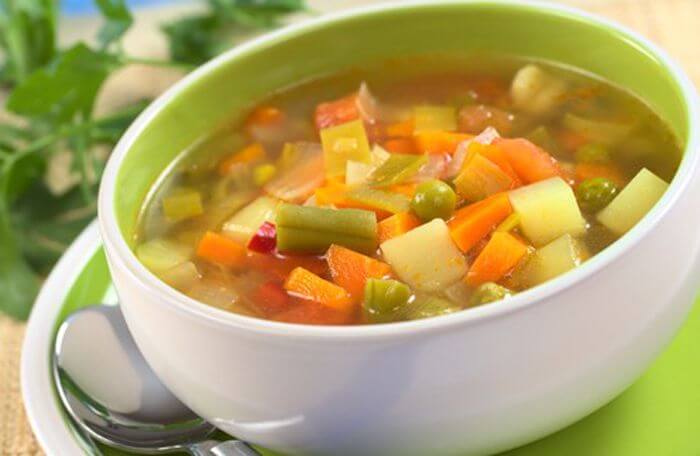
Add chopped herbs (fresh dill or parsley) to the cooked vegetables, lightly add salt and pound, gradually adding vegetable broth from the mug.
Before serving, you can add some crackers to the puree soup. You can sprinkle the dish with a handful of flax seeds or sesame seeds - these healthy additives, rich in valuable elements, are an alternative to bread.
How to take pills correctly
- September 1, 2018
- Gastroenterology
- Maria Maria
Gastritis is a disease of the digestive tract, accompanied by an inflammatory process of the mucous membrane in the stomach.
In the early stages, it may not manifest itself in any way. But the patient still needs treatment. For some patients, doctors prescribe Pancreatin for gastritis.
The result of treatment will depend on the correct use of it.
Is it possible to drink Pancreatin for gastritis?
If you look at the annotation, you can find out that the drug “Pancreatin” is an enzyme agent. It improves the functioning of the pancreas, accelerating the digestion of fatty and carbohydrate foods. The medicine works in the small intestine. The drug is prescribed for:
- replacement therapy (for insufficiency of gallbladder and pancreas functions);
- late pancreatitis;
- inability to chew food thoroughly;
- diseases of the liver and biliary tract;
- flatulence;
- dyspeptic disorders.
Is it possible to take Pancreatin for gastritis? After all, there is no indication for this disease, and doctors continue to recommend tablets for use. The manufacturer indicates that each capsule contains a special shell.
It protects the active substance, which is pancreatin, from the negative effects of hydrochloric acid in the stomach. This condition is provided to ensure that the drug is delivered unchanged to the small intestine, where it will work.
It is safe to say that the drug “Pancreatin” will not be useless for gastritis with high acidity, unlike those drugs that hydrochloric acid and pepsin destroy.
Contraindications for use
Pancreatin tablets for gastritis are prohibited for use by persons with hypersensitivity to the active substance. You should not take the medicine if pancreatitis worsens. If the patient is diagnosed with hepatitis in the acute stage, then treatment should also be abandoned.
Treatment with Pancreatin has virtually no side effects. Negative consequences of therapy occur in only one person out of 10 thousand. Most often they manifest themselves as allergies, which go away on their own after stopping the medication. Do not take Pancreatin tablets on your own. Be sure to consult your doctor for a comprehensive prescription that requires gastritis.
Method of use
Each person who is prescribed this medicine has a number of questions:
- in what dose to take “Pancreatin” for gastritis;
- how long to carry out the course of treatment;
- What are the features of the drug?
If a doctor recommends a drug to you, he will definitely tell you about all the nuances. The instructions will not fully tell you how to use Pancreatin for gastritis on your own.
Doctors usually recommend the following regimens:
- When treating inflammation of the stomach walls, the drug is taken 1-2 tablets in 2-3 doses. Capsules must be taken with meals. However, they should not be sucked or chewed, otherwise the active ingredients will be neutralized by the acidic environment of the stomach. Take the medication with plenty of water, juice or tea. Avoid consuming alkaline liquids during this period.
- “Pancreatin” for gastritis is prescribed together with other medications (antispasmodics, complex antibiotics, antacids and agents that reduce the production of hydrochloric acid). The course of treatment is selected separately for each patient. The recommended treatment time should not be exceeded or reduced. After you feel better, Pancreatin tablets are gradually reduced in dosage under the supervision of a specialist.
- If you are prescribed antacids for the treatment of gastritis, they should be taken separately from Pancreatin tablets. For gastritis, a combination of these drugs taken at the same time reduces the efficiency of digesting heavy foods. With long-term use of the enzyme agent, the absorption of folate and iron decreases. If necessary, they are prescribed additionally.
Medical recommendations
Doctors say that Pancreatin can be taken for gastritis to improve digestion.
However, the drug in the treatment of inflammatory processes in the gastric mucosa should be used in combination with other medications. Pancreatin alone may not be effective.
In order for the treatment to bring good results, be sure to consult a doctor and undergo an examination before using this medicine.
Opinions
Many consumers mistakenly believe that Pancreatin will be ineffective for gastritis with high acidity.
People believe that the contents of the tablet dissolve in the stomach and do not have time to reach the small intestine. This opinion is a misconception. The drug works against increased stomach acidity.
Pancreatin does not treat gastritis on its own, but the drug helps eliminate this problem by supporting digestive function.
Reviews about Pancreatin tablets are mostly good. Many alternative remedies cannot compare with this drug. Pancreatin capsules are available over the counter and are inexpensive.
Summarize
Treatment of gastritis is often accompanied by the prescription of pancreatin preparations. Pancreatin tablets help alleviate the patient’s condition.
The drug allows you not to give up your usual food, but to lead a normal lifestyle. Remember that Pancreatin is more of a digestive aid than a medicine for the treatment of gastritis.
Consult your doctor if you have complaints of stomach pain.
Source: https://SamMedic.ru/333402a-kak-pravilno-prinimat-tabletki-pankreatin-pri-gastrite
